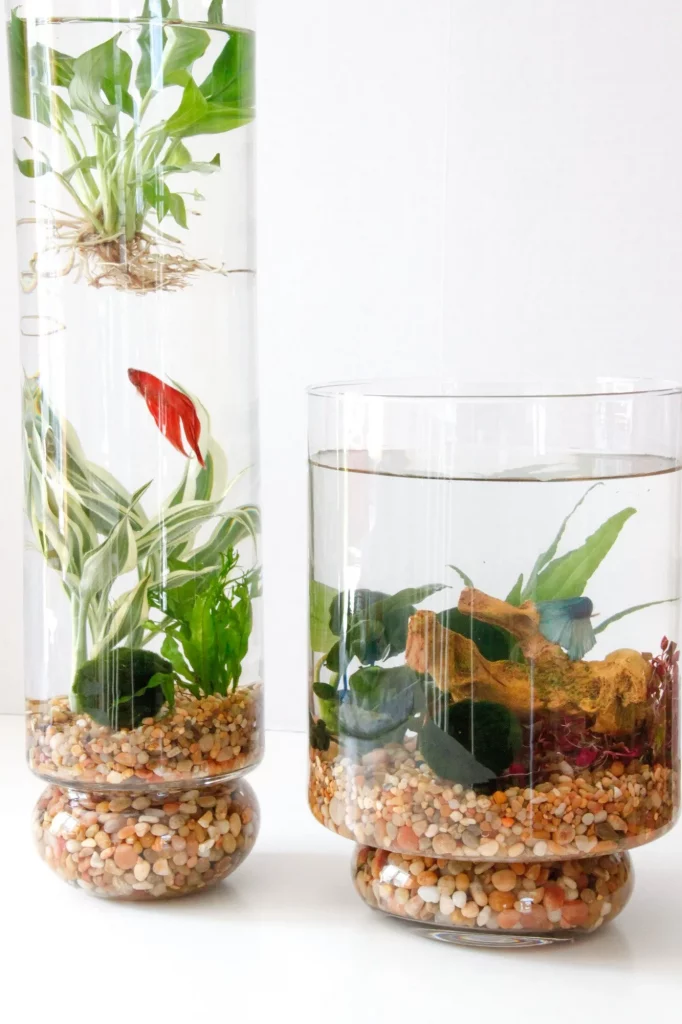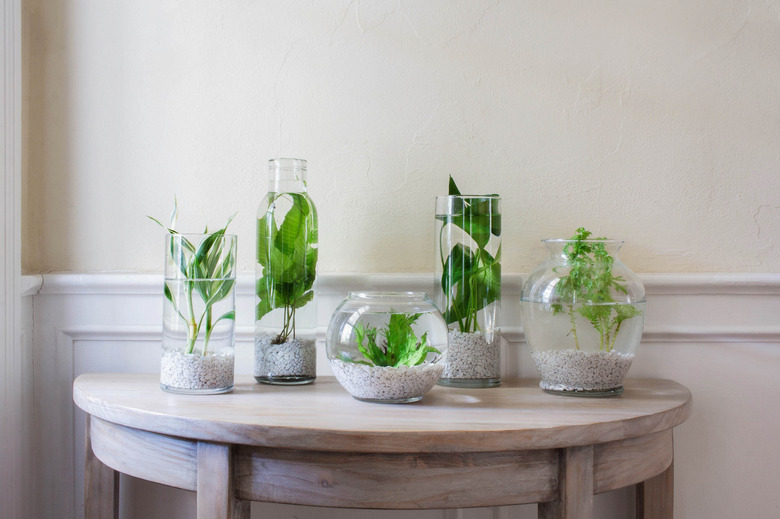Creating an indoor water garden is one of the easiest ways to add calm, movement, and natural beauty to your home. Whether you want floating plants, a tabletop water bowl, or a small indoor water feature, building an indoor water garden is simple — and you only need a few materials to get started.
For extra help mastering basic plant care, see our guide on Simple Indoor Plant Maintenance Routine.
Contents
- 0.1 What Is an Indoor Water Garden?
- 0.2 Best Plants for an Indoor Water Garden
- 0.3 How to Build Your Indoor Water Garden (Step-by-Step)
- 0.4 How to Maintain an Indoor Water Garden
- 0.5 Troubleshooting Common Indoor Water Garden Issues
- 0.6 Final Thoughts on Creating an Indoor Water Garden
- 1 Related Articles
- 2 Stop Mold and Fungus From Spreading Indoors
What Is an Indoor Water Garden?
An indoor water garden is a container filled with water, aquatic plants, and decorative elements that bring nature indoors. Unlike soil-based houseplants, water gardens rely on submerged or floating plants that naturally filter the water and add a relaxing feel to your space.
Indoor water gardens can be:
Tabletop bowls
Glass jars or vases
Aquatic planters
Mini indoor ponds
Low-maintenance décor pieces
They’re perfect for beginners because they require little upkeep and no soil.

Best Plants for an Indoor Water Garden
Choosing the right aquatic plants keeps your indoor water garden clean and thriving. Look for species that grow well in still, shallow water.
Great indoor aquatic plants include:
Lucky bamboo – thrives in water with indirect light
Water lettuce – beautiful floating rosettes
Anubias – extremely low-maintenance
Pothos cuttings – grow well in water with zero effort
Duckweed – tiny floating leaves that multiply naturally
Peace lily cuttings – great for decorative indoor bowls
Avoid plants that require high oxygenation or deep water unless you plan to add a pump.
How to Build Your Indoor Water Garden (Step-by-Step)
1. Choose Your Container
You can use almost any waterproof container:
Glass bowls
Ceramic pots (glazed interior)
Jars
Aquatic planters
Small tabletop aquariums
Clear containers let you see plant roots and decorative stones, which adds visual interest.
2. Add Your Base Layer
Start with a layer of decorative stones, pebbles, or marbles. This helps weigh down plants, improves stability, and keeps the water visually clean.
Avoid using outdoor soil — it clouds the water and encourages bacteria.
3. Add Water (Filtered or Tap)
Fill the container with filtered, rain, or tap water left out for 24 hours to allow chlorine to evaporate. Indoor water garden plants are very sensitive to chemicals.
If you’re adding lucky bamboo or pothos cuttings, water depth should cover the bottom nodes only.
4. Add Your Plants
Place roots gently between pebbles or let floating plants rest on the surface. Ensure no leaves sit underwater — this prevents rot.
5. Position Your Water Garden
Most indoor water gardens prefer:
Bright, indirect light
Away from radiators or heat
A stable room temperature
Floating plants like water lettuce do especially well near east-facing windows.

How to Maintain an Indoor Water Garden
Indoor water gardens are low-maintenance — but a few simple habits keep the water clean and plants healthy.
Top Up Water Weekly
Water evaporates quickly indoors. Add fresh water when levels drop.
Replace Water Every 2–3 Weeks
Refresh the container to prevent algae, odours, and cloudiness.
Clean Leaves and Remove Debris
Remove yellowing leaves before they sink and decay.
Use Natural Fertiliser (Optional)
If your aquatic plants need a boost, add a tiny dose of liquid fertiliser for aquarium plants to support steadier growth.
Add Decorative Elements
Stones, shells, or driftwood help anchor plants and personalise your display.
Troubleshooting Common Indoor Water Garden Issues
Water Turning Green
This is algae growth. Move your container slightly away from strong sunlight and change the water.
Yellowing Leaves
Usually caused by too little light or old water. Refresh the container more often.
Cloudy Water
Often due to plant debris or using soil — stick to pebbles instead.
Roots Rotting in Water
Ensure plant leaves aren’t submerged and replace water weekly.
Final Thoughts on Creating an Indoor Water Garden
An indoor water garden is one of the simplest and most beautiful ways to bring nature into your home. With just a container, clean water, and a few aquatic plants, you can create a calming, low-maintenance feature that looks stunning in any room. Keep the water fresh, give your plants the right light, and enjoy the relaxing movement and greenery your indoor water garden brings.
For more guidance on aquatic plant care, the RHS provides excellent advice on keeping water-grown plants healthy.
Related Articles
PREVENT PROBLEMS BEFORE THEY START
Stop Mold and Fungus From Spreading Indoors
Moisture and poor airflow can quickly lead to mold and fungus in indoor soil. Learn the simple fixes that keep your plants healthy, your soil fresh, and your home free from unwanted growth.

